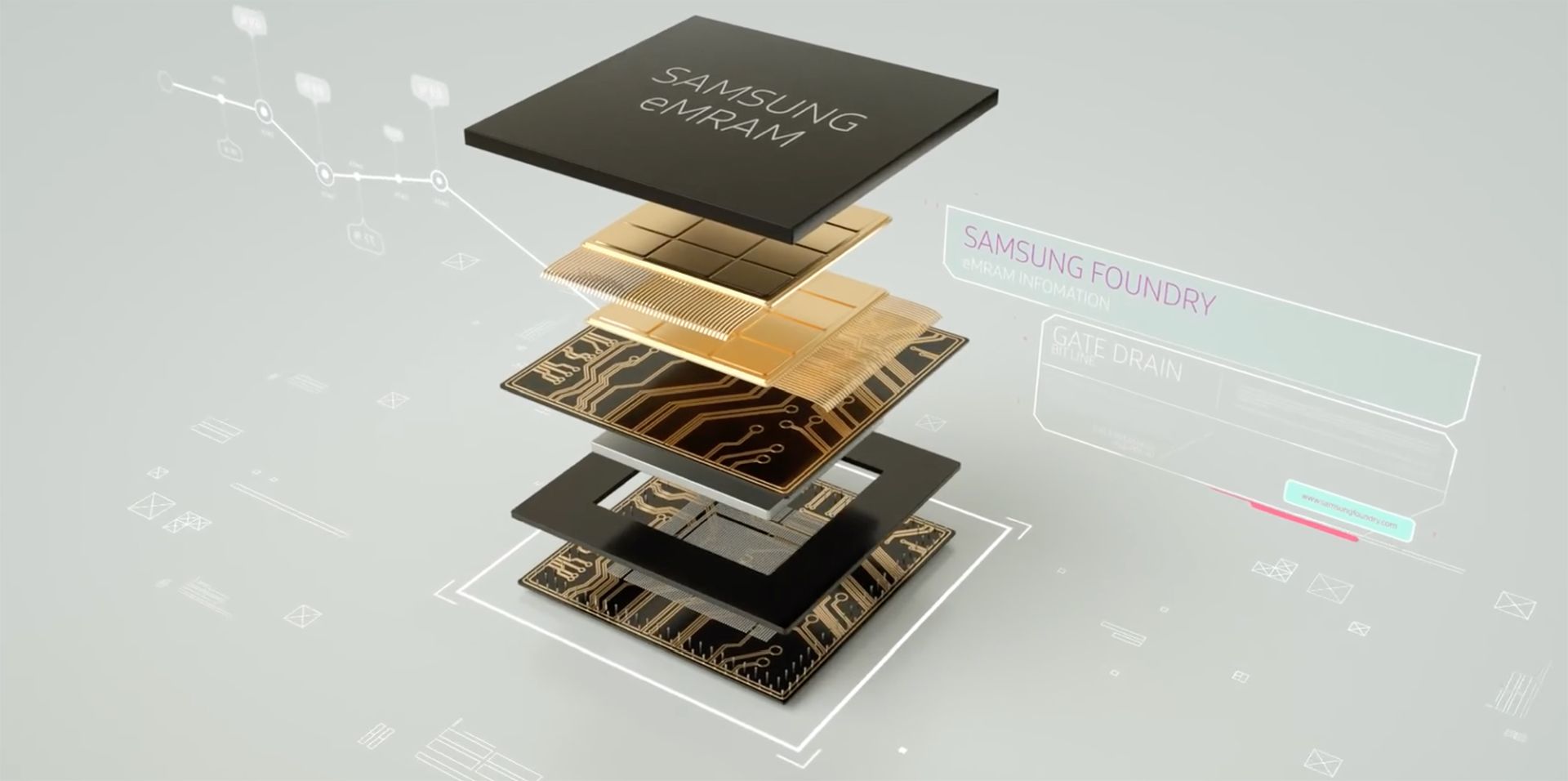Samsung is reportedly turning its attention towards the emerging MRAM market with the goal of expanding the application of MRAM technology to additional sectors, revealed Samsung Foundry principle engineer Han Shin-hee at SEMICON Korea via The Elec. The company hopes for its MRAM chips to be used in more areas beyond IoT and AI, such as graphic memory, low level cache, the automotive market, and even wearables.
Samsung's been working on MRAM for years and it began mass producing its first commercial MRAM solution in mid-2019. It was built using a 28nm FD-SOI process. The solution had a limited capacity, which is one of the drawbacks of MRAM, but it was reportedly applied to IoT and AI chips as well as microcontrollers manufactured by NXP. Coincidentally, NXP could soon be owned by Samsung if the company moves forward with its next wave of mergers and acquisitions.
Samsung now wants MRAM to become a viable solution for more market segments and applications, seeing how the global MRAM market is expected to be valued at $1.2 billion by 2024.
What is MRAM and how does it differ from DRAM?
MRAM stands for Magnetosensitive Random-Access Memory. As opposed to flash memory / DRAM (Dynamic Random-Access Memory) which stores data as an electric charge, MRAM is a non-volatile solution that uses magnetic storage elements consisting of two ferromagnetic films and a thin barrier to store data.
In practice, MRAM is incredibly fast and can be up to 1,000x faster than eFlash. In part, this is because MRAM doesn't have to perform an erase cycle before writing new data. It also requires less energy than conventional storage mediums.
On the other hand, MRAM's biggest weakness lies in its low storage capacity, which is one of the reasons why it occupies a relatively narrow niche on the market rather than hitting mainstream. But with Samsung now reportedly wanting MRAM to succeed in more areas, the technology could soon be used in wearables and other mobile devices.



